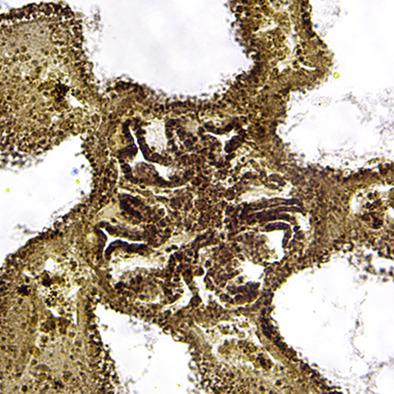当前位置:
X-MOL 学术
›
J. Morphol.
›
论文详情
Our official English website, www.x-mol.net, welcomes your feedback! (Note: you will need to create a separate account there.)
Axial complex of Crinoidea: Comparison with other Ambulacraria
Journal of Morphology ( IF 1.5 ) Pub Date : 2020-09-08 , DOI: 10.1002/jmor.21259 Olga Vladimirovna Ezhova 1 , Vladimir Vasil'yevich Malakhov 1
Journal of Morphology ( IF 1.5 ) Pub Date : 2020-09-08 , DOI: 10.1002/jmor.21259 Olga Vladimirovna Ezhova 1 , Vladimir Vasil'yevich Malakhov 1
Affiliation

|
The anatomy of Crinoidea differs from that of the other modern echinoderms. In order to see, whether such differences extend to the axial complex as well, we studied the axial complex of Himerometra robustipinna (Himerometridae, Comatulida) and compared it with modern Eleutherozoa. The axial coelom is represented by narrow spaces lined with squamous coelothelium, and surrounds the extracellular haemocoelic lacunae of the axial organ. The latter is located, for the most part, along the central oral‐aboral axis of the body. The axial organ can be divided into the lacunar and tubular region. The tubular coelomic canals penetrating the thickness of the axial organ have cuboidal epithelial lining, and end blindly both on the oral and aboral sides. The axial coelom, perihaemal coelom, and genital coelom are clearly visible, but they connect with the general perivisceral coelom and with each other via numerous openings. The haemocoelic spaces of the oral haemal ring pass between the clefts of the perihaemal coelom, and connect with the axial organ. In addition, the axial organ connects with intestinal haemal vessels and with the genital haemal lacuna. Numerous thin stone canaliculi pierce the spongy tissue of the oral haemal ring. They do not connect with the environment. On the oral side, each stone canaliculus opens into the water ring. The numerous slender tegmenal pores penetrate the oral epidermis of the calyx and open to the environment. Tegmenal canaliculi lead into bubbles of the perivisceral coelom. Some structures of the crinoid axial complex (stone canaliculi, communication between different coeloms) are numerous whereas in other echinoderms these structures are fewer or only one. The arrangement of the circumoral complex of Crinoidea is most similar to Holothuroidea. The anatomical structure and histology of the axial complex of Crinoidea resembles the “heart‐kidney” of Hemichordata in some aspects.
中文翻译:

Crinoidea 的轴心复合体:与其他Ambulacraria 的比较
Crinoidea 的解剖结构与其他现代棘皮动物的解剖结构不同。为了了解这种差异是否也延伸到轴向复合体,我们研究了厚叶姬蜂(Himerometridae,Comatulida)的轴向复合体,并将其与现代刺五加进行了比较。轴向体腔由鳞状体腔内衬的狭窄空间代表,并围绕轴向器官的细胞外血腔腔隙。后者大部分位于身体的中央口-口轴。轴向器官可分为腔隙区和管状区。穿透轴向器官厚度的管状体腔管具有立方上皮衬里,并且在口侧和口侧均盲端。中轴体腔、血液周围体腔和生殖体腔清晰可见,但它们与一般的内脏周围体腔相连,并通过许多开口相互连接。口腔血液环的血腔间隙穿过血液周围体腔的裂隙之间,并与轴向器官相连。此外,轴向器官与肠血管和生殖器血管腔隙相连。许多细小的结石小管刺穿口腔血液环的海绵组织。它们与环境无关。在口腔一侧,每个结石小管都通向水环。无数细长的盖膜孔穿透花萼的口腔表皮并向环境开放。Tegmenal 小管通向内脏周围体腔的气泡。海百合中轴复合体的一些结构(小管结石,不同体腔之间的交流)很多,而在其他棘皮动物中,这些结构较少或只有一个。Crinoidea 口周复合体的排列与 Holothuroidea 最相似。Crinoidea 轴复合体的解剖结构和组织学在某些方面类似于 Hemicordata 的“心肾”。
更新日期:2020-09-08
中文翻译:

Crinoidea 的轴心复合体:与其他Ambulacraria 的比较
Crinoidea 的解剖结构与其他现代棘皮动物的解剖结构不同。为了了解这种差异是否也延伸到轴向复合体,我们研究了厚叶姬蜂(Himerometridae,Comatulida)的轴向复合体,并将其与现代刺五加进行了比较。轴向体腔由鳞状体腔内衬的狭窄空间代表,并围绕轴向器官的细胞外血腔腔隙。后者大部分位于身体的中央口-口轴。轴向器官可分为腔隙区和管状区。穿透轴向器官厚度的管状体腔管具有立方上皮衬里,并且在口侧和口侧均盲端。中轴体腔、血液周围体腔和生殖体腔清晰可见,但它们与一般的内脏周围体腔相连,并通过许多开口相互连接。口腔血液环的血腔间隙穿过血液周围体腔的裂隙之间,并与轴向器官相连。此外,轴向器官与肠血管和生殖器血管腔隙相连。许多细小的结石小管刺穿口腔血液环的海绵组织。它们与环境无关。在口腔一侧,每个结石小管都通向水环。无数细长的盖膜孔穿透花萼的口腔表皮并向环境开放。Tegmenal 小管通向内脏周围体腔的气泡。海百合中轴复合体的一些结构(小管结石,不同体腔之间的交流)很多,而在其他棘皮动物中,这些结构较少或只有一个。Crinoidea 口周复合体的排列与 Holothuroidea 最相似。Crinoidea 轴复合体的解剖结构和组织学在某些方面类似于 Hemicordata 的“心肾”。

























 京公网安备 11010802027423号
京公网安备 11010802027423号